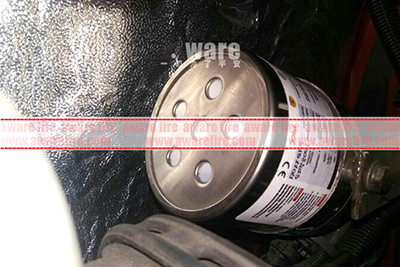Categorieën
- Onze blog (59)
- technologische ondersteuning (15)
Spoorweg locomotieven hebben honderden jaren ontwikkelingsgeschiedenis en vele jaren technische innovatie. Vandaag, we talk about the fire protection of railway locomotives. Allereerst, we zouden moeten praten over de kennis van spoorweglocomotieven.

De spoorlocomotief zelf heeft geen stroomvoorziening, whether it is a passenger locomotive or a freight locomotive; we moeten veel rijtuigen met elkaar verbinden om een trein te vormen, and then it can move only after being pulled by a locomotive. daarom, de locomotief is de basiskracht van het spoorvervoer.
There are many kinds of locomotives for the railway. According to the original power of the locomotive, er zijn stoomlocomotieven, diesellocomotieven, en elektrische locomotieven.
The application of steam locomotives has a 170-year history. Het zet de warmte-energie van een brandstof om (steenkool, olie-, hout) omgezet in mechanische energie via een stoommachine,
Het zet de warmte-energie van een brandstof om (steenkool, olie-, hout) omgezet in mechanische energie via een stoommachine, om de trein te laten rijden. The components of a steam locomotive are the boiler, the steam turbine, the frame, the coal and water cars, the coupler, the buffers, and the brakes.
The steam locomotives are characterised by low thermal efficiency, high energy consumption, and low conveying capacity, and the people of the world no longer use them.
Een diesellocomotief is een locomotief die wordt aangedreven door een dieselmotor, Its characteristics are high thermal efficiency, lange ononderbroken werktijd, and suitability for long-distance operation.
The diesel locomotives have two styles: electric drive and hydraulic drive.
De elektrische locomotief zelf vervoert geen elektrische energie, het hangt af van het onderweg verkrijgen van elektrische energie van de bovenleiding. and the traction motor drives the locomotive forward.
De elektriciteitscentrale zendt 110 tot 220 kV three-phase power frequency AC power through the transmission line to the railway traction substation, welke levert 25 tot 27.5 kV single-phase power frequency AC power to the catenary for electric locomotives.
An electric locomotive mainly contains the vehicle body, loopwerk, onderstel, koppelaar en bufferinrichting, remapparaat, en een complete set elektrische apparatuur.
De elektrische locomotief heeft de voordelen van een groot vermogen, hoge startsnelheid, goed in klimmen, and easy to implement high-speed and heavy-load.
Momenteel, als gevolg van de uitgebreide ontwikkeling van elektrische energie en de voortdurende ontwikkeling van nieuwe energie, de elektrische locomotief is de meest gebruikte geworden.
De hogesnelheidstrein, metro, en lightrail die we gebruiken, worden allemaal aangedreven door elektrische locomotieven.
echter, ongeacht het type locomotief, including an electric locomotive, ze produceren veel warmte als ze in werking zijn.
There are many pipeworks on a locomotive, making the internal space limited, which can easily lead to thermal runaway after long periods of travelling, ageing wiring, and hot weather.
Het verlies van een locomotief als gevolg van brand na een thermische runaway is enorm, en het economische verlies is duizenden dollars. daarom, we moeten nadenken over de kwestie van locomotiefbrandpreventie, en het is noodzakelijk om een geschikt locomotiefbrandbeveiligingssysteem te selecteren.
Zoals we eerder vermeldden, there is a lot of pipework and limited space, so the fire extinguishing system for locomotives should have the following characteristics:
Momenteel, grootschalige aardgasproductie, schuim, en watermistbrandblussystemen zijn niet geschikt voor spoorlocomotieven. de overige twee producten zijn het meest waarschijnlijk de keuze voor locomotiefbrandbeveiliging, zijn: brandbeveiliging in spuitbussen of Fire Trace Tube onderdrukkingssysteem.
Hierbij, let us compare these two systems: the Aerosol Fire Suppression System and the Fire Trace System.
Het Aerosol-systeem heeft de volgende belangrijkste voordelen:
The fire trace system has the following main advantages:
daarom, from the point of view of safety and convenience, the aerosol fire extinguishing system will be more suitable for railway locomotives.
Many people are worried that they don’t know how to install aerosol systems on railway locomotives. The installation on a railway locomotive is simple. The steps are as follows:
Magnet-attached mounting is a simpler and more convenient way of mounting. We mount the fire extinguishing device directly to the iron plate of the locomotive engine.
The main steps in wiring are as follows
Onze dealers over de hele wereld hebben veel installatiegevallen. In de volgende, we list some of them:
Het is haalbaar om een aërosolbrandblussysteem te kiezen als brandbeveiligingsoplossing voor spoorweglocomotieven.